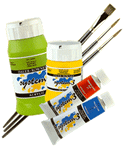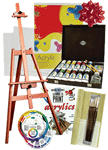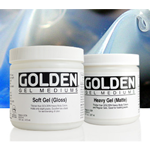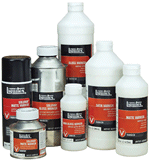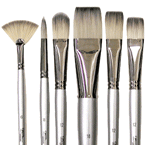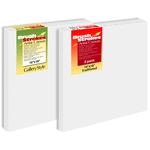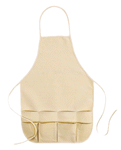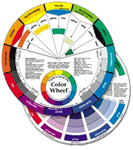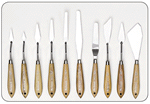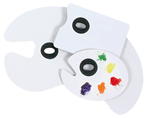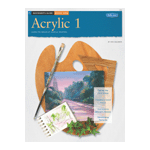Liquitex Varnishes
Definition
- A varnish is applied over dried paint to change or unify the surface sheen (gloss, matte, semi-gloss), protect the painting surface from the environment and protect color from ultraviolet light.
- Varnishes may increase the color saturation of the finished painting.
- Varnishes may be used as a fixative to protect delicate art materials (charcoal and pastel).
- Removable varnishes allow for ease of cleaning finished painting.
LIQUITEX PERMANENT NON-REMOVABLE VARNISHES
GLOSS MEDIUM & VARNISH - FLEXIBLE SURFACES
- Translucent when wet, clear when dry.
- Increases gloss, depth and intensity of colors it is applied over.
MATTE PERMANENT VARNISH -FLEXIBLE SURFACES
- Produces a non-glare, low sheen surface that will intensify dull colors.
- Does not drastically reduce color depth as does Matte Medium.
HIGH GLOSS PERMANENT VARNISH - RIGID SURFACES
- Translucent when wet, clear when dry.
- Increases gloss, depth and intensity of colors it is applied over.
- Do not use on flexible surfaces such as canvas.
SATIN PERMANENT VARNISH - RIGID SURFACES
- Produces a non-glare, low sheen surface that will intensify dull colors.
- Does not drastically reduce color depth, as does Matte Medium.
- Do not use on flexible surfaces such as canvas.
Attributes - All Varnishes except Soluvar
- 100% acrylic polymer varnish. Water soluble when wet. Good chemical and water resistance.
- Dry to a non-tacky, hard, flexible surface that is resistant to retention of dirt.
- Resist discoloring (non-yellowing, nonfogging) due to humidity, heat and ultraviolet light.
- Depending upon substrate, allows moisture to pass through (breathable).
- Permanent Flexible Varnishes will not crack as surface expands and contracts during temperature and humidity changes. Applicable for any surface (flexible and inflexible) suitable for acrylic paint and mediums, such as canvas, paper, wood, Plexiglass, etc.
- Permanent Varnishes will crack on flexible surfaces. Applicable to surfaces such as wood, Masonite, decorative ceramic plates and other rigid surfaces suitable for acrylic paint and mediums.
- Not for use over oil paint.


